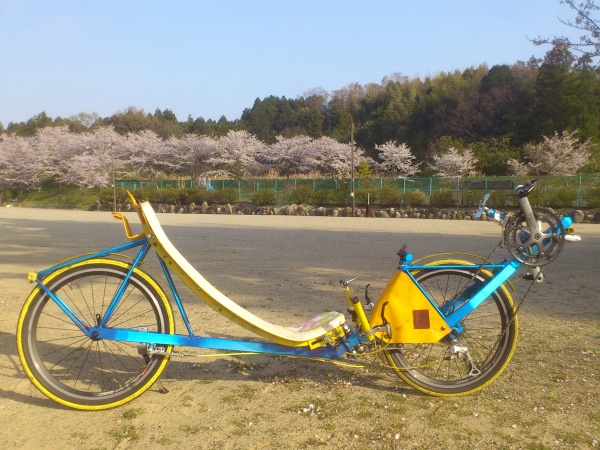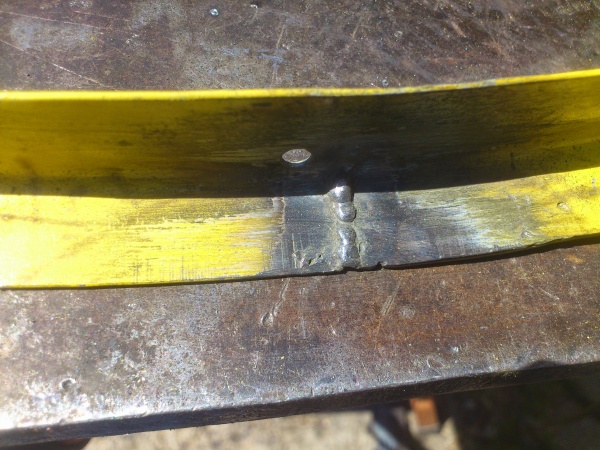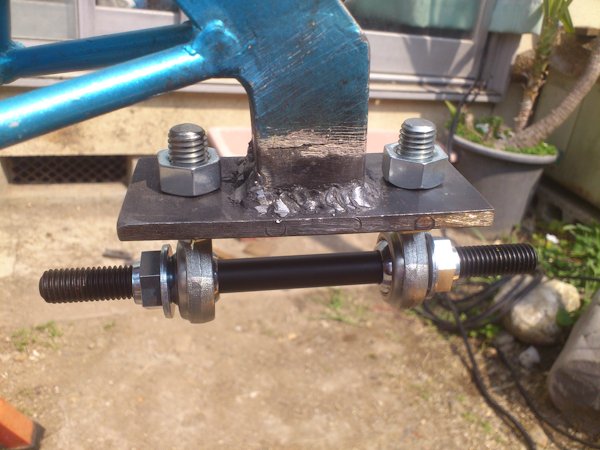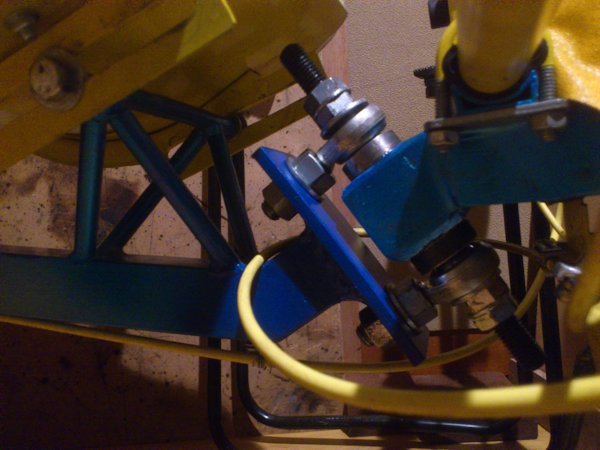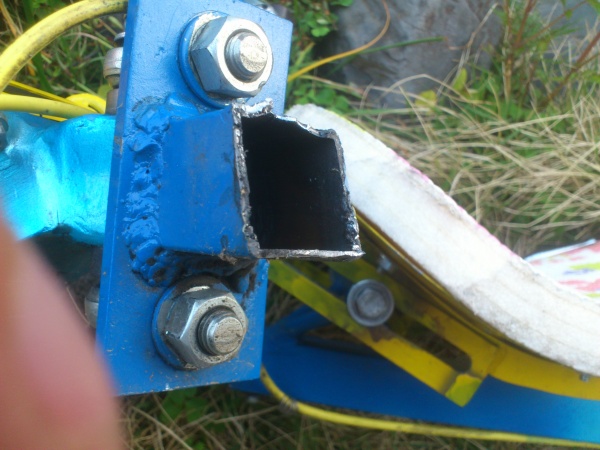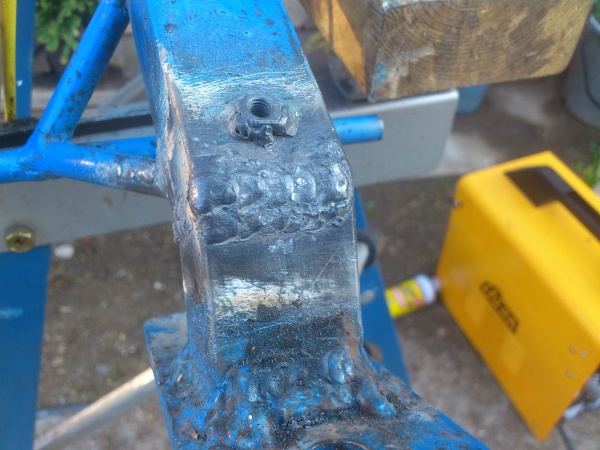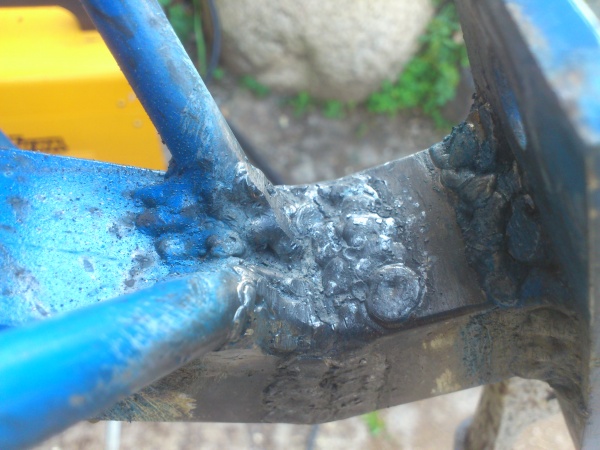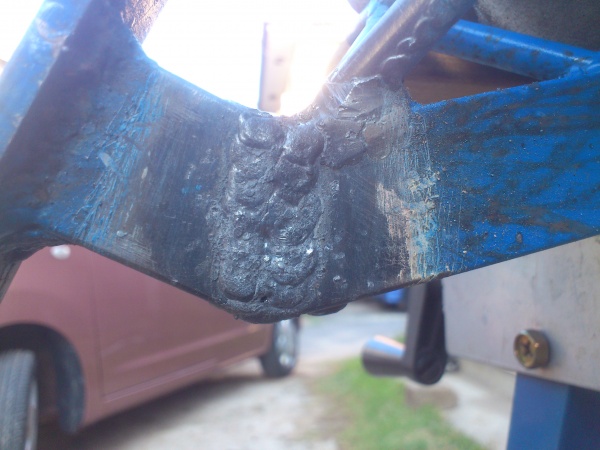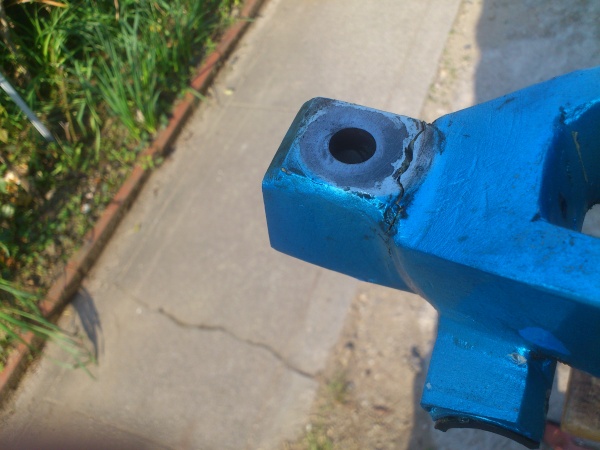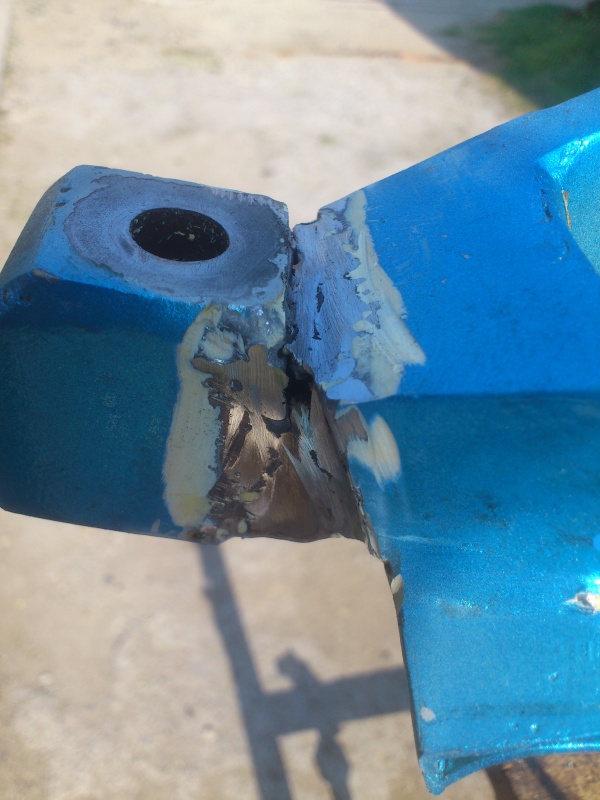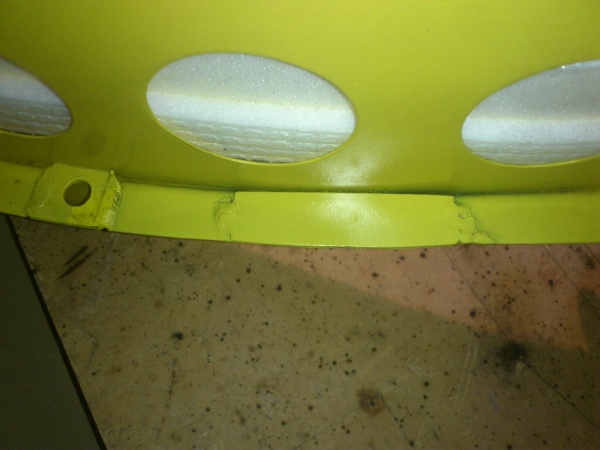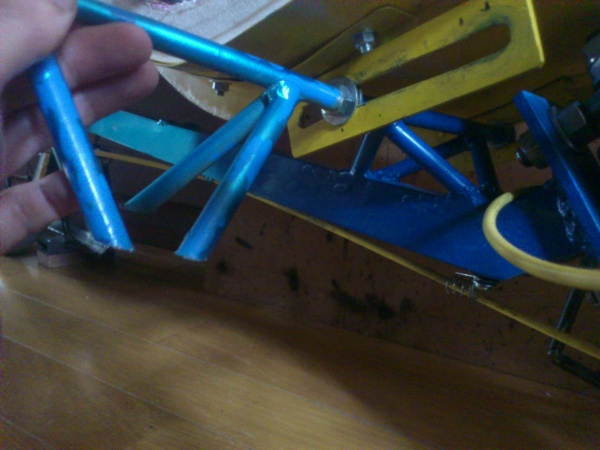Tokinori
Roll out 25 Jan 2014 in JAPAN. Fuuden Factory supported me and this project.
11th July 2014 mileage 3120km.
19th Aprile 2014 mileage 2024km.
16th March 2014 mileage 1000km.
Max speed 45 km/h by pedaling on flat road. On down hill, 61.8 km/h is max.
I write my making stuff on my blog which title is Loving wheels.
I contributed my riding from my begining Facebook Python lowracer page.
Contents
Center Gravity
It's 55.2% at the front wheel. The position of BB on this my python is based on the length of chain which is one package for normal bike. So, The length of BB-FWA is short.
The driving wheel needs the weight to get the frictional resistance between the tire and the ground. So The front wheel of the python needs more weight on and in front of it. Lonoger BB-FWA helps to give more weight to the front wheel.
I choose economical way which is the lowest cost for changing chain.
broken seat frame
myleage 3700 km, I found the frame of seat was broken.
Around here, at myleage 1600 km, I found the same problem. At that time, to more stiffness, I welded thin iron sheet. This time, the side of the welded the thin iron sheet was broken. My welding skill was bad. Then, I repaired.
M12 bolt as steering axle of Flevo's construction is weak.
I have tried to use M12 stainless and mild steel bolt for pivot of the construction of flevo's. But the bolt is weaker. it is bent with my weight.
So I changed the construction to the other way. But the used screw bolt is M12's which is used with milling machine.
This time, I use MIG welding. it's speedy and easy way.
Broken main frame
At mileage about 2030 km, the main frame was broken.
Welded part was weaker, I guess. So This time, I repaired it with 3 passes welding. The surface of underside of the main frame wasn't welded, just bent. Then it was broken. In this case, Iron plate is welded to cover there, That's better solution. However, by welding, The both side of welding will support the weight. In the other word, a side of welding support a half weight. I keep observing, whether my this idea is right.
It looks 2 passes. the first pass is covered by 2 and 3 passes.
After welding, I think that it's better to attach iron plate to make force on around the side of broken part. Any way, I'm going to keep observing this bike with riding.
Cracked the front part
Fortunately, Before broking, I could found the cracking.
To repaire, old welding was cleaned. when I made it, I use arc welding. it's hard to weld thin iron plate by arc welding. My arc welding is also bad.
I welded this cracking by Mig welding. To check it, I need riding for more 2000 km, Maybe.
The frames of the seat were extended.
When my python was rolled out, it had 3 stays to support the seat. But I took off the middle one to be easy to change the position. So, around the middle of the frames which are made from mild steel sheet (thickness 1.0mm) supported my weight without the middle stays. The frames have some holes for screws. I found 2 parallel holes were oval although they should be circle for the screw. Around there are extended, I thought and I welded thin iron sheet and covered the holes.
The seat stay was changed to small one.
When I changed the Flevo style construction of steering to the other one with Rod Ends, the height of the seat became high. I can touch the ground with only the top of fingers. So, I needed lower seat position. By that, the difference of the seat and the crank became wider. I can ride with more speed, but the control of steering becomes more sensible.
The seat is movable.
